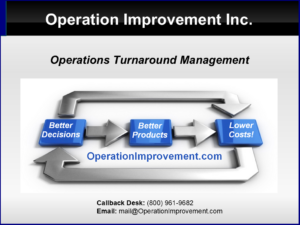Managing 10 or 1000
What are the similarities and differences between managing a few or many? What advice would you give to the newly promoted? What will be similar? What is going to change?
The Similarities
Managers always work with and through the cooperation of others. Management at any level relies on a proper organization of work and on the competencies of others to be successful. Management of many simply exaggerates this fact and makes it more obvious.
Technology may enhance our power to speak, and we have the means to issue directives to a billion people, but technology cannot make it possible to listen to a billion individuals. We will never listen to, read an email from, or read a book by most of the people alive on the planet today, nor will we see news stories or movies featuring them.
Do the math! Fifteen minutes listening only once to a person multiplied by 100,000 people takes 12 years at a dedicated 40 hours per week!
It is a proper organizational structure and division of labor that makes it possible for leaders of few or many to listen to the right things at the right time.
If the organizational structure is sound, all managers deal with approximately the same number of direct reports and peers. I discussed this with a Parris Island Marine colonel who put it this way:
“The Corps develops leadership throughout the organization, training individuals to step forward into the next tier of responsibility. Although I am responsible for more than a thousand Marines, I spend most of my time working closely with about a dozen other people, and so does a squad leader.”
The Differences
As managers are promoted to higher and higher levels of responsibility, there will be two key differences:
1. What is directly perceivable or self-evident to the junior manager becomes increasingly abstract at higher levels. The reverse is also true! Each must think about what the other simply sees.
The view from thirty thousand feet is a metaphor often used to dismiss the CEO’s perspective for being blind to the so-called facts on the ground, but the view from four feet has weaknesses as well. The fact is, from the two perspectives, each observer sees what the other must understand abstractly.
2. With each promotion, a manager’s role in an organization involves more strategic decisions and fewer tactical decisions.
Risk Becomes Real to the Manager of Many
It is difficult for many entry-level managers to incorporate risk analysis in their decision-making. Risk is so abstract that it doesn’t seem to possess the power of reality.
Suppose spare tires were options when you purchased your first car. “Take it,” the dealer would advise. “You’ll need it if you have a flat!” Suppose you don’t buy the spare, and in ten years of driving you never had the predicted flat tire. What conclusions would you draw?
Good management practices in small organizations often target the management and reduction of risk. If risks are small, good habits often go unrewarded and bad habits often go unpunished.
For example, a capability study may calculate an increased risk of scrap if a process is operated while SPC analysis shows the process is out of control. Some managers choose to flout the statistical warnings and press on, avoiding scrap on their watch by luck of the draw.
The manager of many is subject to the discipline of large numbers. The abstract risk in small numbers approaches a tangible certainty as the numbers increase. The principles underlying actions will have many more opportunities to manifest their consequences.
This calls for a small revision of an old warning: “Be careful what you ask for: in small numbers you risk getting it; in large numbers you will!”
This large-number effect applies to the many unlikely but possible adversities and tragedies of life and work. For example, the manager of many will more likely encounter difficult employee issues. Many managers of ten may, with luck, avoid a problem employee decision for a year or even five. The biggest risk for the newly promoted is the failure to deal directly, rationally, and decisively with the unpleasant when it inevitably arises.
Everyday Work Is Abstract to the Manager of Many
It becomes impossible to understand a very large business by just looking. The work must be conceptualized.
Properly done, process dependencies and management metrics tell the manager of ten what they are seeing with their own eyes. For the manager of many, conceptual tools are the only way to grasp the current state of the business.
The newly promoted manager must strive to master the appropriate tools of their position and not simply imitate the motions of their predecessor. They also need to learn to detect flawed legacy reports that are actually floating abstractions, conceptual fantasies that claim to describe the current state of the business but actually have no connection to reality.
Higher Management Decisions Are Increasingly Strategic
With each promotion, a manager’s role in an organization involves more strategic decisions and fewer tactical decisions. Some reflection on the division of labor in decision-making is in order. Are you ultimately responsible for the commercial success of a product or product family? Do you manage the supporting engineering and project departments necessary to build and modify the processes of your business? Or are you expected to run the existing processes as correctly and consistently as possible?
The top leadership of an organization is responsible for its policy—the integrating idea of what the company will be and what it will do. Strategic decision-makers are responsible for goals, the evaluation of risk, and the identification and operational funding of necessary project objectives and process capabilities.
Within the constraints of operational funding, tactical decision-makers are responsible for (a) the correct and consistent execution of projects and (b) the correct and consistent operations of business processes.
A Final Piece of Advice to the Newly Promoted Manager
It is a mistake to think that your last job has prepared you for your new job. The competencies you have perfected in your last job are perfect for just that—your last job. The policy of learning something new every day is increasingly important with each promotion. It can help you beat the Peter Principle, the pattern of promotion beyond productiveness.
© Operation Improvement Inc 2025. All rights reserved.





